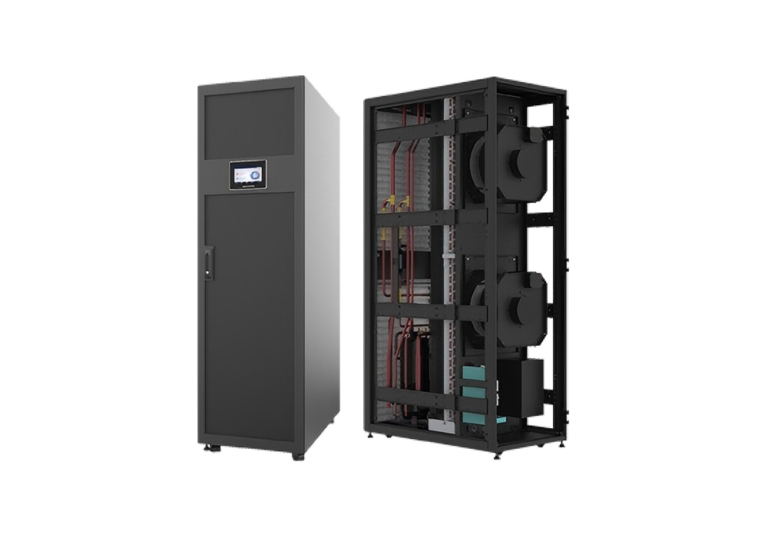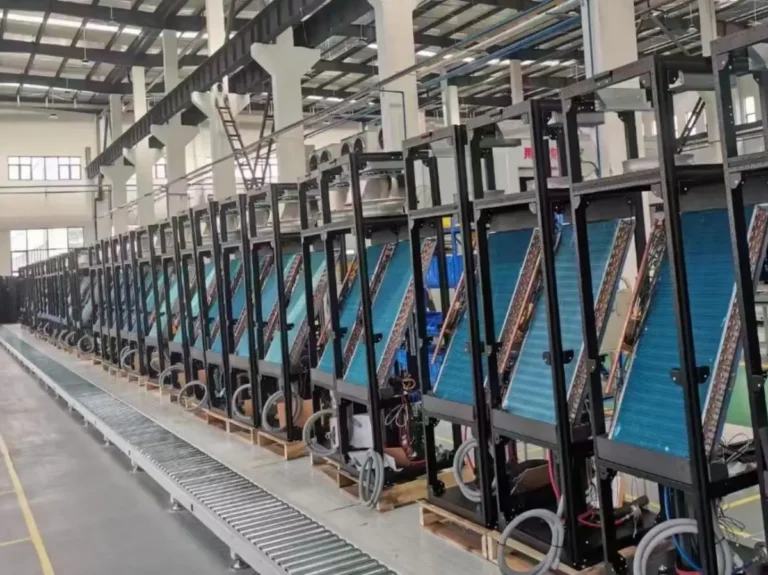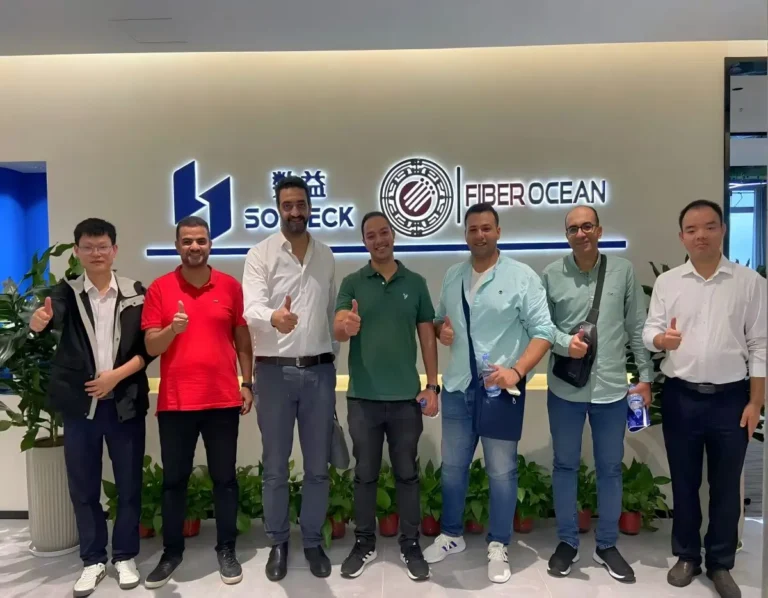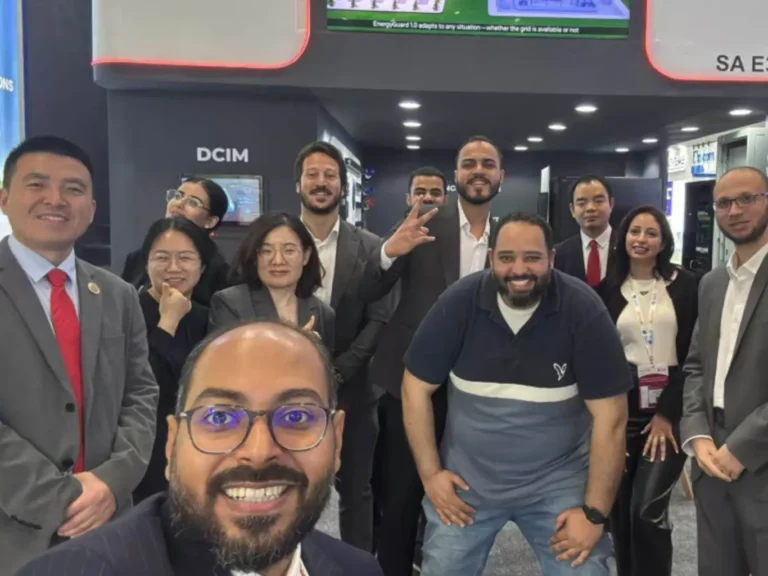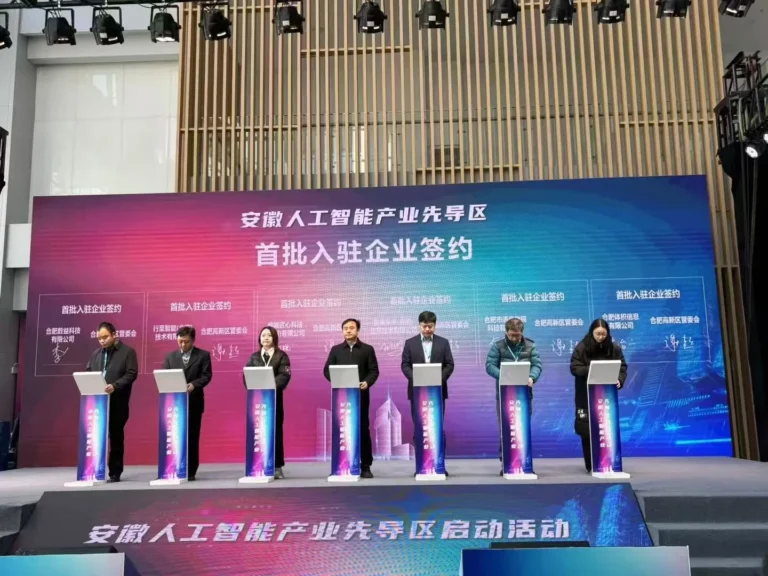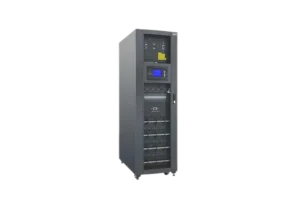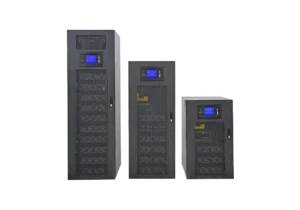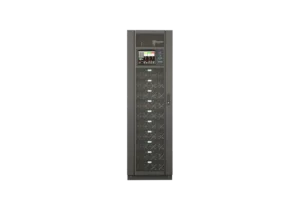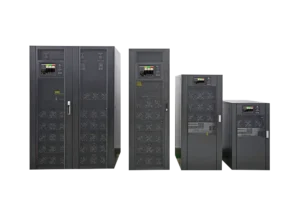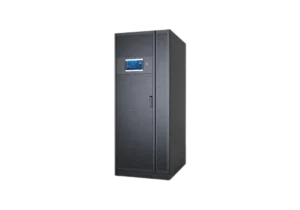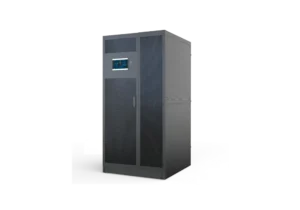Water-cooled Precision Air Conditioner is one of the four main types of Precision cooling system including free cooling, air-cooled, chilled-water and water-cooled PACs. It is an ideal precision cooling solution for an area with low degree of humidity. The drier the area is, the higher efficiency it gets. Low humidity and dry environments give a big stage for water-cooled cooling systems like CRACs and HVACs.
However, humidity can also be a barrier for water-cooled precision air conditionings which might make it difficult to choose a suitable model of it. In this article, we are going to talk about why it can complicate your selections and give you some suggestions to help you make right decisions.
How and Where Does the Water-Cooled Precision ACs Work ?
Let’s start with a simple introduction of the structure in a common water-cooled precision cooling system. It typically contains two main parts: an indoor unit (similar to air-cooled precision cooling system) and an outdoor unit which is exactly a cooling tower.
1. Indoor Unit
The indoor units of water-cooled PACs are similar to those of air-cooled PACs, typically consisting of a compressor, evaporator, EC/AC fan, humidifier, air filter, and control system. A key difference is that a plate heat exchanger is integrated into the indoor unit of water-cooled precision cooling system. Within this device, the external water circulation line and the internal refrigerant circulation pipe efficiently exchange heat: the refrigerant releases the indoor heat it has absorbed, and the water absorbs this heat, transferring it to the outdoor unit.
2. Outdoor Unit (Cooling Tower)
Lower humidity helps water evaporate better and water evaporation brings away heat from its surrounding environments. This is the core principle of how the outdoor unit (cooling tower) of water-cooled PACs works—it acts as the “final outlet” for heat dissipation, reducing the temperature of the hot water coming from the indoor unit through evaporative cooling.
To maximize the evaporative cooling effect, the cooling tower is equipped with four core components:
- Fill Material: Made of PVC or PP, with a honeycomb or corrugated structure. It maximizes the contact area between water and air, allowing hot water to spread into a thin film quickly, which accelerates evaporation.
- Water Distribution System: Includes spray nozzles or troughs that evenly spray the hot water (from the indoor unit’s plate heat exchanger) onto the fill material. Even distribution avoids local overheating and ensures every part of the fill is used effectively.
- Fans: Divided into induced draft type (with a fan at the top to draw air upward, commonly used in data centers) and forced draft type (with a fan at the bottom to push air upward). These fans drive outdoor air through the fill material, further enhancing water evaporation.
- Drift Eliminators: A mesh-like structure at the top of the tower. As air exits the tower, it may carry tiny water droplets (called “drift”); the eliminators catch these droplets and return them to the tower, reducing water waste and preventing mineral deposits on nearby equipment.
3. Application Scenarios: Where Water-Cooled Precision ACs Shine
From the working principle of the outdoor unit, it’s clear that the heat dissipation efficiency of water-cooled PACs relies heavily on water evaporation—and low humidity environments significantly boost evaporation speed. Therefore, their core application scenarios are:
- Dry regions: Such as parts of Northwest and North China, or Arizona in the United States, where the average outdoor humidity is 20%-40%. In these areas, water-cooled PACs can maintain high efficiency with low energy consumption.
- Medium-to-large data centers and high-density rooms: For example, AI computing clusters or cloud data centers. These scenarios require continuous, stable large cooling capacity, and water-cooled PACs have a lower PUE (Power Usage Effectiveness, usually below 1.4) compared to air-cooled systems, meeting strict energy-saving requirements.
- Noise-sensitive environments: Cooling towers can be deployed far from the main computer room, while indoor units operate with lower noise than air-cooled models, making them suitable for scenarios where noise control is critical.
The Dual Role of Humidity: From Advantage to Barrier
Humidity is a “double-edged sword” for water-cooled PACs. Low humidity is the key to their high efficiency, while high humidity becomes a major obstacle to their selection and operation—creating completely opposite impacts on the system.
1. Low Humidity: A “Booster” for Efficiency
In dry environments (humidity < 50%), low humidity optimizes the evaporative cooling process of the cooling tower, enhancing the overall performance of water-cooled PACs in three key ways:
(1) Faster Cooling, Lower Energy Consumption
Low humidity means air has a strong “moisture-holding capacity”—it can quickly absorb water from the cooling tower’s fill material. Every kilogram of evaporated water takes away about 2260 kJ of heat, allowing the hot water (35-40°C) to drop to the target temperature (28-32°C) quickly. At the same time, fans don’t need to run at high speeds to drive evaporation, so energy consumption is only 1/3 to 1/2 of that in high-humidity environments.
(2) Reduced Water Waste
In dry air, most evaporated water is absorbed as water vapor instead of being carried out of the tower as “drift”. With the help of drift eliminators, the water recovery rate can reach over 98%, and the daily water replenishment volume is only 1/5 of that in high-humidity areas—greatly reducing water resource costs.
(3) Less Equipment Wear and Tear
In low-humidity conditions, water circulates quickly in the system and doesn’t stay in the cooling tower for long. This prevents minerals in the water (such as calcium and magnesium) from depositing and forming “scale” on the fill or pipes. Additionally, dry air slows down the corrosion of metal components (like pipe walls and fan shafts), extending the equipment’s service life by 3-5 years.
2. High Humidity: A “Stumbling Block” to Operation
When outdoor humidity exceeds 65% (e.g., coastal areas in South China or Miami, USA), the air’s moisture-holding capacity is nearly saturated. This disrupts the evaporative cooling process of the cooling tower, leading to a series of problems for water-cooled PACs:
(1) Plummeting Heat Dissipation Efficiency, Insufficient Cooling Capacity
High humidity slows down evaporation by 50%-70%. The cooling tower can no longer lower the water temperature to the required range—for example, it may only cool hot water from 38°C to 35°C instead of 28-32°C. This means the indoor unit’s plate heat exchanger can’t effectively absorb heat from the refrigerant, and IT equipment (like servers) may trigger high-temperature alarms due to poor heat dissipation.
(2) Equipment Overload and Soaring Energy Costs
To compensate for insufficient cooling, the cooling tower’s fans have to run at maximum speed. According to the “Fan Affinity Law”, doubling the fan speed quadruples its energy consumption. Meanwhile, water pumps also need to accelerate water circulation to increase contact time between water and air. Together, these factors push the system’s overall energy consumption to 200%-300% higher than in low-humidity environments, and the PUE may exceed 1.8—losing the energy-saving advantage that water-cooled systems are known for.
(3) Rising Risks of Scale and Corrosion
Slow evaporation means water stays in the cooling tower longer. Minerals in the water gradually deposit on the fill material and pipe surfaces, forming a layer of “scale”. Scale acts as an insulator, further reducing heat exchange efficiency. At the same time, high humidity creates a damp environment that accelerates the corrosion of metal components. To solve this, users have to frequently replace parts made of 304/316L stainless steel, increasing annual maintenance costs by 50,000-100,000 yuan.
(4) Dew Point Issues Causing System Failures
If the outdoor air’s dew point temperature is higher than the cooling water’s temperature, condensation will form on the surfaces of the cooling tower’s pipes and water collection basin. This condensation adds extra moisture to the system, leading to mold growth (which clogs the fill material) and short circuits in the fan’s electrical wiring. In extreme cases—such as during a tropical storm when humidity exceeds 95%—the cooling tower may completely stop working, causing the entire water-cooled PAC system to shut down.
How to Choose Water-Cooled PACs Under Different Humidity Levels
To address the dual impact of humidity, selecting water-cooled PACs must follow the principle of “adapting to local conditions”. You need to combine the humidity characteristics of the target area (e.g., annual average humidity, peak humidity periods) and optimize the selection from three aspects: equipment configuration, material choice, and system design.
1. Dry Areas (Humidity < 50%): Prioritize Cost-Effectiveness
In dry regions, the evaporative cooling process of the cooling tower works efficiently, so you can focus on balancing performance and cost:
(1) Equipment Selection
- Cooling Tower: Choose “forced draft cooling towers”. They are cheaper than induced draft towers and don’t require complex drift eliminator designs (since dry air reduces drift significantly).
- Indoor Unit: Opt for a standard plate heat exchanger made of carbon steel—no additional anti-corrosion treatment is needed, as dry air minimizes rust risks.
- Control System: Simplify humidity-linked functions. You only need to retain the basic setting of “reducing humidification when indoor humidity is too low” to avoid unnecessary energy consumption.
(2) Operation and Maintenance Tips
- Clean the cooling tower’s fill material once a quarter to remove dust and sand (which can block the fill and reduce evaporation efficiency).
- Monitor the water quality of the circulation system monthly to prevent mineral accumulation—but you don’t need to add anti-corrosion chemicals frequently.
2. High-Humidity Areas (Humidity > 65%): Focus on Moisture Resistance and Stability
In high-humidity regions, you need to upgrade the system to counteract the negative effects of slow evaporation and corrosion:
(1) Equipment Configuration Upgrades
- Cooling Tower: Select “closed cooling towers with dry-wet hybrid mode”. When humidity is high, use the wet mode (relying on spray evaporation); when humidity drops, switch to the dry mode (using air convection for cooling). This reduces dependence on evaporation and lowers energy consumption.
- Materials: Replace pipes and plate heat exchangers with 316L stainless steel (which resists salt spray corrosion, ideal for coastal areas). For the cooling tower’s fill material, choose PP (polypropylene) instead of PVC—PP is more resistant to mold growth in damp environments.
- Control System: Add a “dew point linkage function”. If the outdoor dew point temperature is higher than the cooling water temperature, the system automatically starts pipeline insulation heating to prevent condensation from forming on pipes.
(2) Redundancy Design for Reliability
- Configure cooling towers according to the “N+1” principle. For example, if 3 towers are enough to meet the cooling load, install 4 towers. This ensures that if one tower fails, the remaining ones can still maintain normal operation.
- Reserve 10%-15% of cooling capacity. This compensates for the reduced efficiency of the cooling tower during extreme high-humidity periods (like rainy seasons or typhoons).
3. General Selection Steps: Start with Humidity Research
No matter where you are, you should follow these three steps to avoid wrong decisions:
(1) Create a “Humidity Profile” of the Target Area
Collect hourly humidity data for 12 months (including peak humidity periods, such as the June-September rainy season in South China). Record key metrics like “average annual humidity”, “maximum humidity”, and “dew point temperature range”—this data will be the basis for equipment selection.
(2) Calculate Actual Cooling Demand
In high-humidity areas, the cooling tower’s efficiency drops by 20%-30%, so you need to estimate the actual cooling capacity by multiplying the “nominal cooling capacity” (provided by the manufacturer) by 0.7-0.8. In dry areas, you can use the nominal cooling capacity directly or multiply it by 1.0-1.1 to reserve a small buffer.
(3) Evaluate Total Cost of Ownership (TCO)
Don’t just focus on the initial purchase cost. In high-humidity areas, you need to include the cost of anti-corrosion materials, additional energy consumption, and frequent maintenance in the TCO (which is usually 1.5-2 times higher than in dry areas). This helps you avoid unexpected expenses after installation.
Conclusão
Water-cooled precision air conditioners are not a “one-size-fits-all” solution—their performance and suitability depend heavily on humidity. In dry areas, they are the most efficient and cost-effective choice for data center cooling; in high-humidity regions, however, they require targeted upgrades to overcome evaporation inefficiencies and corrosion risks.
For users, the key to successful selection is to stop focusing solely on “cooling capacity” and start treating “humidity characteristics” as a core evaluation index. By first understanding the humidity rules of your area, then matching the right cooling tower type, materials, and control logic, you can balance efficiency, cost, and reliability. As data centers move toward higher density and lower PUE, humidity will only become more critical to water-cooled PAC selection. Mastering this “invisible factor” is the key to choosing a cooling system that truly fits your needs.

